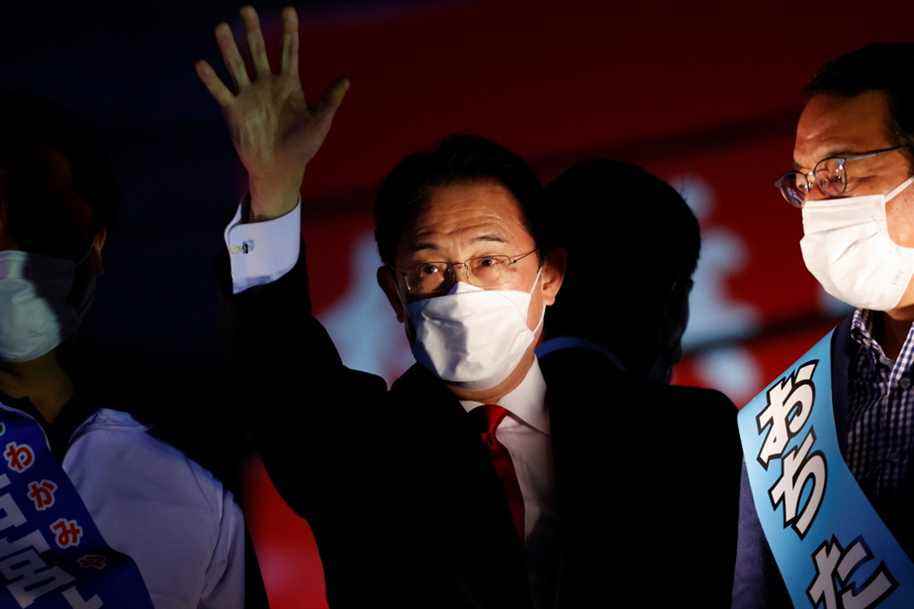(Tokyo) New Prime Minister Fumio Kishida is hoping to keep his post after Sunday’s legislative elections in Japan, which his party is expected to win, but probably leaving feathers there, analysts say.
Some 106 million Japanese are called to decide between 1051 candidates for 465 seats in the lower house of the Diet. The pandemic and the economy were the dominant themes of a very brief 17-day election campaign.
In the previous legislature, the Liberal Democratic Party (PLD, nationalist right), dominating the Japanese political scene almost without interruption for 66 years, held 276 seats and its ally, the Komeito party (center right), 29, or 305 seats in the total.
Their coalition thus had a solid parliamentary base, allowing control of all the levers of power. But the context has changed a lot compared to the last legislative elections in 2017.
Shinzo Abe, who appeared stainless as prime minister, resigned in September 2020 for health reasons. His successor Yoshihide Suga lasted only one year, victim of unpopularity records due to his management considered clumsy to the health crisis and his desire to maintain at all costs the Olympic Games in Tokyo this year.
Elected president of the PLD at the end of September thanks to the support of the caciques of the party, then appointed prime minister by the Parliament at the beginning of October, Mr. Kishida, 64, does not enjoy great popularity in public opinion. It hovered around 50% in early October, one of the lowest for a new Japanese leader in twenty years.
“Resurrection” or “death plunge”?
Mr. Kishida is aiming for the shortest absolute majority in the legislative elections: 233 seats for the PLD and Komeito together. A way to save face even in the event of a significant loss of seats.
“If their number of seats fell to this level, it would be very difficult for Mr. Kishida’s reputation,” warns Michael Cucek, professor of Asian studies at the Japanese campus of Temple University, interviewed by AFP.
“When a prime minister is in this position only because of others, the moment he begins to lose altitude, he starts heading for a lethal plunge,” adds Cucek.
“We must show the public that the PLD is resuscitated,” said Mr. Kishida after his election as head of the PLD. He promised to make the fight against COVID-19 his number one priority, but also to revitalize the economy and reduce growing social inequalities. However, he remained vague on the measures to achieve this.
The PLD has long benefited from a historically weak and fragmented opposition. But for these legislative elections, five opposition parties will cooperate in many constituencies, which could theoretically weaken the PLD.
Assets for the PLD
“Mr. Kishida is facing headwinds due to low popularity and more coordinated opposition,” said Stefan Angrick, economist at Moody’s Analytics.
On the other hand, the PLD has large resources and remains a master in the art of controlling the electoral process, especially in rural areas. “There are personal ties between the families of his candidates and the voters, which go back several generations,” recalls Mr. Cucek.
Another asset for Mr. Kishida and his party: the number of coronavirus infections has fallen in Japan (around 270 new cases daily on the last seven-day average), after reaching records in August under the effect of the Delta variant .
And after a difficult start in early 2021, the vaccination campaign in the archipelago has become a success: more than 71% of inhabitants have now received two injections, one of the highest rates among OECD countries.
Voter turnout, particularly low in Japan (53.68% in the 2017 legislative elections and 52.66% in 2014), will be closely scrutinized on Sunday. A high abstention traditionally favors the PLD.
